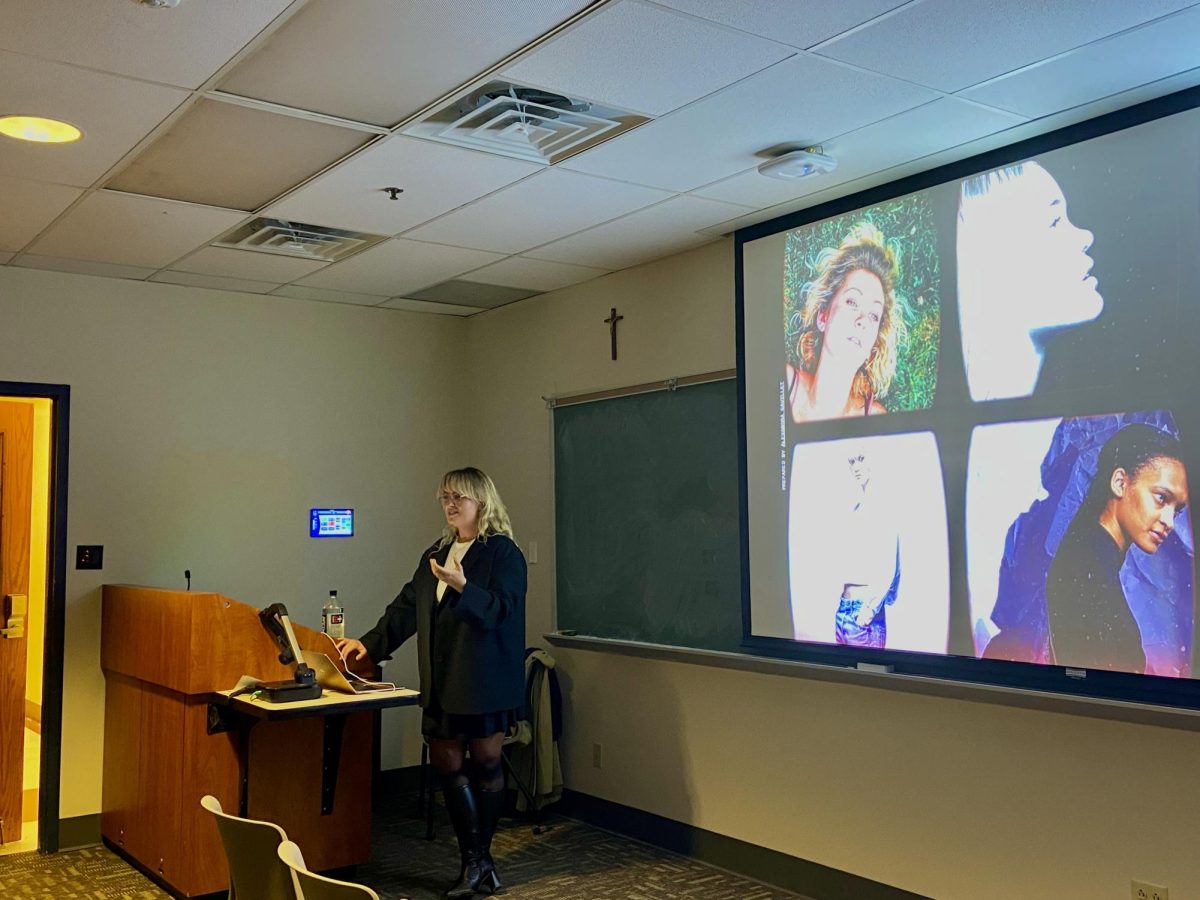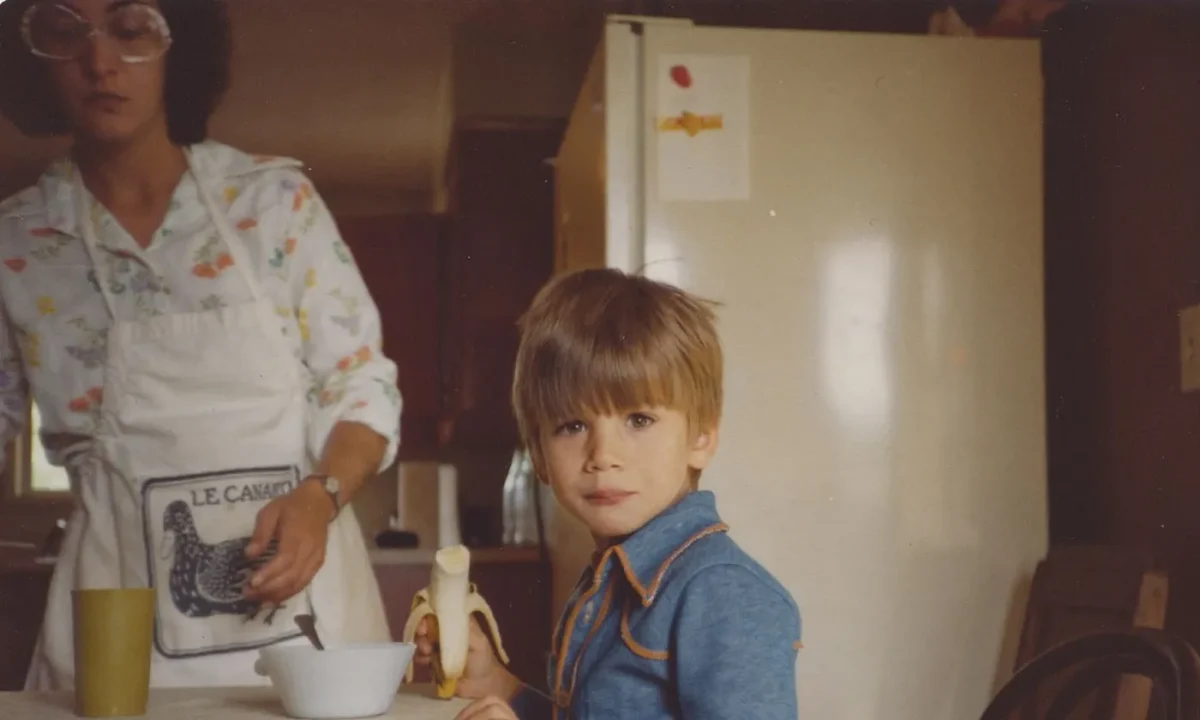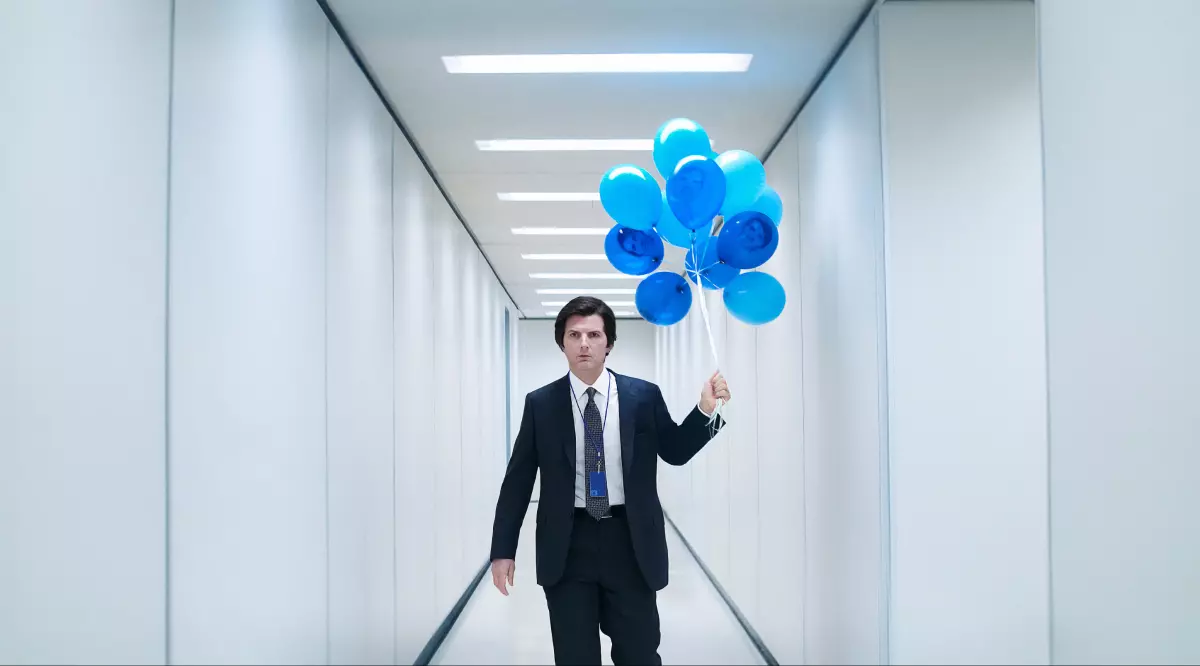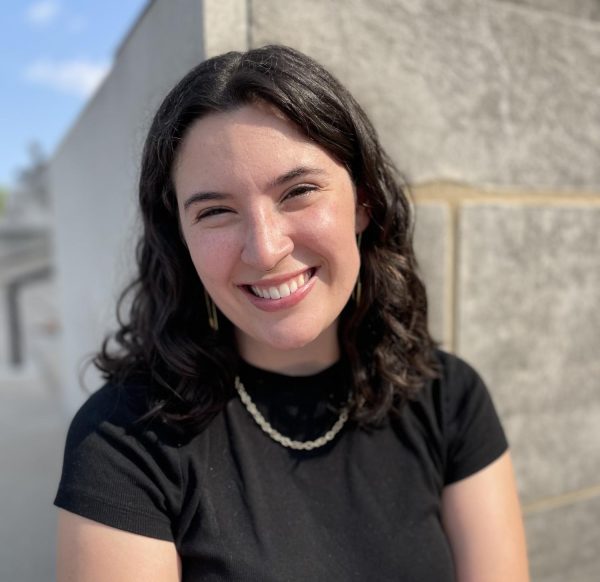On Jan. 29, multi-hyphenate visual artist Alexander Gavillet spoke to SLU students at the Kristen Peterson Distinguished Lecture in Art and Art History. Originally from Chicago, Gallivet now lives and works in Los Angeles directing narrative films. Her commercial and editorial photography can be seen in “Vogue, Billboard, GQ, Complex, Fader, The Hollywood Reporter and Spin” featuring personalities like Billie Eilish, Victoria Beckham, Dua Lipa–the list goes on. Her commercial film clients include Sauve (Barbie campaign), Lululemon, HBO Max, Nike, Converse, Reebok, Vogue, Amazon and Jose Cuervo. Gavillet’s career began during her college years at New York University’s Tisch School of the Arts, a time she recalls as especially transformative.
“Being in school was such a beautiful part of me finding my network, my best friend I literally met in my freshman year dorm and a lot of people that I’ve ended up working with, I literally met when I was a freshman,” said Gavillet. At the lecture, she shared some of her industry wisdom with students, as well as some insights into the business side of self-starting in the art world.
Share, share, share!
Gavillet encourages students to get their work out there as much as possible. “Marketing yourself if you want to work professionally is the most important thing. A lot of times we are afraid. We’re afraid to market ourselves. We’re like, ‘Oh I’m not going to get any likes.’ No, just put this stuff out there and be fearless because when people want to work with you in the industry, or as a creative, they are going to look at your Instagram.”
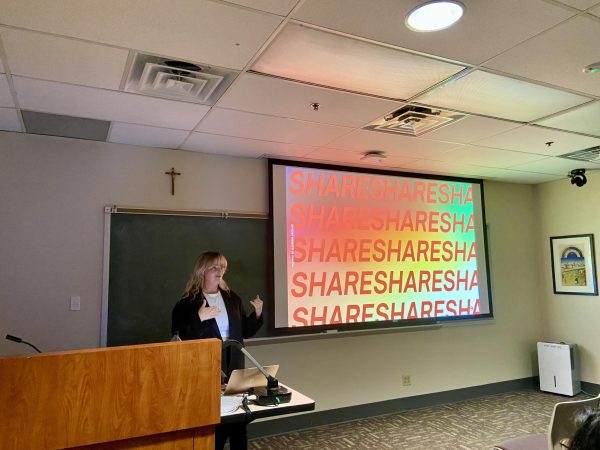
Just as important as social media marketing, Gavillet told students to create a website and stay up to date with it. “Share your work, be ruthless because the only person that’s going to advertise yourself well is going to be you,” said Gavillet.
Reach out.
Right after one of her first shoots in her early years at NYU, Gavillet rushed the photos to a nearby modeling agency. “I went to this old school modeling agency and was like ‘Can you hire me to take tests of your models?’ And they did, which is so cool,” said Gavillet. Gavillet got her start from reaching out and asking for an opportunity, which would continue to serve her in the years to come.
Throughout her career, Gavillet has been a big fan of the reach-out. “I would spend my Tuesdays and Wednesdays sending out hundreds of emails like this,” said Gavillet, referencing a screenshot of emails with an introduction about her work. “If you want to work for someone, their emails are online. You would be surprised who answers and how that can change your life,” Gavillet said.
Why Tuesdays and Wednesdays? “If you ever cold call people, do it Tuesday and Wednesday mornings. On Mondays, people have work to do. Tuesday, they’re like ‘Okay I’m gonna open this email’, Wednesday the same. Thursday, ‘I have to finish my thing for Friday,’” said Gavillet.
Gavillet recommends reaching out to anyone and everyone and keeping the message short. Stick with one or two sentences that explain your work and what you want to do with them.
Archive your ideas.
Gavillet suggests a lot of reflection when it comes to building a career as a young person. She recommends writing lists of the people students dream of working with and even writing down their general creative dreams. “I think writing down your dreams, literally on a piece of paper or on a document is one of the best things you can do. It kind of starts to give you direction in life.”
Keeping track of inspiration comes in handy later. “If you see something that inspires you please put it in a folder somewhere. You’re always going to need an archive,” said Gavillet. Gavillet spoke to her own archive of inspiration pictures that came in handy that morning during a pitch.
Stay savvy.
Gavillet scrolled through some of her most recognized photos, including a vibrant shoot with Billie Eilish. She recalled that the shoot did not even have a budget, but she was able to connect with friends to create the set. She suggests making use of the resources nearby, especially other friends in creative industries or equipment from school. While vibrant colors have become somewhat of a signature for Gavillet’s work, she has also found this method is a great low-cost option. “I think color transforms spaces and if you don’t have that much to work with, it makes your production value really good,” Gallivet said.
Use your voice and be enthusiastic.
About her start in commercial photography, Gallivet said, “I was a little intimidated, honestly, because I thought I didn’t know enough technicality. But then I learned that everyone has their own way of working and just because I wasn’t that technical didn’t mean that I didn’t know what I was doing.” Gallivet believes that just about anyone can fake it until they make it. She finds that personality and enthusiasm can be better selling points than actual technical skills.
“Be confident in your voice, and sure of yourself. That’s all you need,” Gallivet said.




